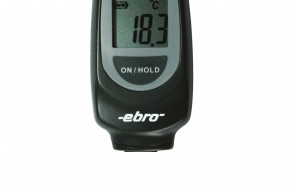The engineering feats of mankind are manifest, from vast suspension bridges to skyscrapers and from supercars to space stations. All of these achievements were completed with a relatively simple series of processes. Most industrial processes involve some sort of chemical reaction, and thus the use of an industrial thermometer is key to ensuring safe and effective manufacturing practices. Applications include establishing hygienic parameters for food and beverage processing and production, automotive assembly, and verifying the durability to industrial goods.
Three main varieties of industrial thermometers exist, each of which is made from different materials and has different tolerances to temperature extremes.

Bi-Metal Thermometer
Manufactured entirely of metal, bi-metal thermometers are highly durable. The measuring component consists of a metal strip containing two types of metal side by side, one of which is not very sensitive to heat, while the other exhibits high heat sensitivity. When it experiences a change in temperature, one side of the metal strip will contract or expand more than the other, causing the strip to bend in ways that can be measured.
The bi-metallic component is hermetically sealed inside a stainless steel body. Bi-metal thermometers are straightforward to use, cheap to produce and produce accurate readings across a wide range of temperatures. Plumbers and HVAC technicians use them for their simplicity, and they are also found in die-cutting, welding, pyro-processing and pipeline industries.
Digital Thermometer
Digital thermometers generally produce highly accurate readings and are broken down into three sub-categories: thermistors, resistance temperature detectors (RTDs) and thermocouples. Thermistors are made from ceramic or polymer, which reacts to temperature changes, and they contain a resistor that measures the changes. Thermistors are best used to record temperatures in a lower, more limited range and don’t offer the extreme temperature tolerance found with other industrial thermometers.
RTDs contain a thin metal wire, the ‘element’, contained inside a ceramic or glass core. The known electrical resistance of the element at various temperatures allows environmental temperatures to be measured. Thermocouples, by contrast, consist of two different metal conductors which together produce a voltage. The voltage is produced in response to temperature and changes proportionally in response to changes in temperature. Thermocouples can withstand greater temperature extremes than RTDs.
Infrared Thermometer
The most technologically advanced form of the device, infrared thermometers provide a high degree of flexibility in terms of potential applications. They use infrared beams to detect temperature, and thus can be used without actually making contact with the object being measured. This makes them useful when safety is paramount, such as in steelwork, forging and induction heating.
The type of industrial thermometer required depends entirely on the demands of the intended application. Specific factors to consider are the range of temperatures to be measured, whether or not that range includes extremes and the overall environment in which the thermometer will be used. Durability and ease of use are often the biggest concerns for many consumers. With the right research, you will most likely find a piece of equipment that will get the job done perfectly.




